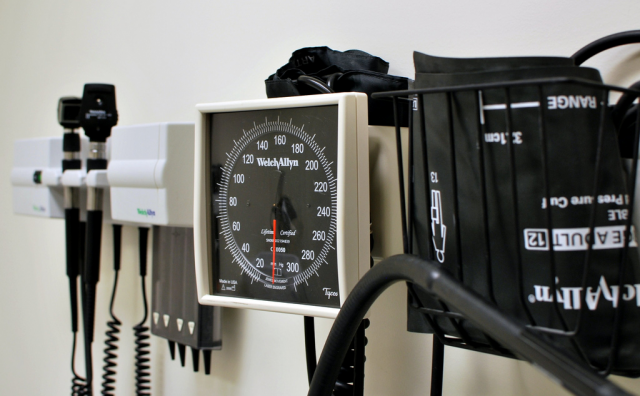
A recent MinnPost article by Susan Perry shared excerpts from an article by Shannon Brownlee from the Lown Institute. In “Over-treated: Why Too Much Medicine Is Making Us Sicker and Poorer,” Brownlee delivered three main points: 1) only a few “lone ranger” doctors are working against a powerful medical complex that keeps delivering treatments patients don’t need; 2) these doctors can’t “buck” this aspect of modern medicine because of factors such as pharmaceutical marketing, fear of lawsuits, misguided patients, and lack of knowledge about medical evidence; and 3) reducing medical overtreatment will require large-scale political mobilization.
We applaud Brownlee for shining a light on the fact that many of our nation’s health-care systems have for too long overdiagnosed and overtreated patients, contributing to inappropriate care and waste we cannot afford. We as a nation — both the health-care system and citizens — have the flawed belief that more care is always better care, and that more expensive care provides even better care.
However, we disagree with the conclusions that only lone rangers are working on this issue and are unable to change the system. Minnesota is leading the movement to reduce overtreatment and make care more affordable.
No lone-ranger effort
The Institute for Clinical Systems Improvement (ICSI), a nonprofit health-care-improvement organization, and MN Community Measurement (MNCM), a nonprofit health-care measurement organization that publicly reports cost, quality and patient experience results, have been working with medical groups, hospitals and nonprofit health plans in Minnesota to deliver high-quality, appropriate care for years. This is not a lone-ranger effort; ICSI is composed of more than 50 medical groups representing 8,000 doctors, and MNCM reports on more than 300 medical groups, 1,600 clinics and 140 hospitals.
Through collaborative efforts, medical groups, health plans, patients and other stakeholders are focused on achieving the triple aim of better care, better health and lower costs. Some recent examples include:
- Medical groups and health plans collaborated to embed evidence-based criteria into electronic health record systems to ensure appropriate diagnostic imaging scans were ordered. This saved an estimated $234 million, prevented an estimated 100 cancers from unnecessary X-rays and improved patient experience.
- The RARE (Reducing Avoidable Readmissions Effectively) Campaign, led by ICSI, the Minnesota Hospital Association and Stratis Health, engaged 86 hospitals and 104 community partners to prevent 7,975 avoidable hospital readmissions. This saved an estimated $110 million and allowed Minnesotans to spend an estimated 31,900 more nights sleeping in their beds rather than in hospitals.
- MNCM recently released the nation’s first publicly reported, statewide Total Cost of Care results for medical groups. By gathering all costs for treating patients — professional, inpatient, outpatient, pharmacy, lab, radiology and more — into an average monthly patient cost, consumers can now for the first time compare costs of care across 115 Minnesota medical groups, representing 1,052 clinics. Medical groups are using the information to evaluate how to provide more high-quality, cost-effective care.
- ICSI, the Minnesota Medical Association, and the Minnesota Health Action Group are raising awareness statewide of the national Choosing Wisely campaign, which seeks to foster meaningful conversations between doctors and patients on care that is appropriate.
We agree wholeheartedly with Brownlee’s call to reduce medical overtreatment. Current health-care costs are unsustainable, especially since the health-care system alone only contributes to 20 percent of the population’s health. If we are overspending on health care, we take money away from education, employment and the environment — other factors that contribute more to our population’s health than doctors and clinics.
We also agree a large-scale mobilization is needed to reduce medical overtreatment. But it doesn’t have to be solely political — the work locally proves it.
New products, systems and efforts

We all have to mobilize — the health-care industry, our communities, and we as individuals. Politically this is being recognized through federally funded initiatives to develop and test health-care payment and care delivery models that will improve performance, increase the quality of care and decrease costs. Minnesota nonprofit health plans are designing new insurance products and payment systems that reward value, not just volume. Mobilization is also being encouraged through grant-funded efforts. ICSI is leading the Robert Wood Johnson Foundation (RWJF) funded initiative “Going Beyond Clinical Walls” to help bring clinicians together with community leaders and resources to provide better care and lower costs; a MNCM-led, RWJF-funded effort is helping consumers better understand and access information on the quality of healthcare provided by local physicians.
A better health-care system can emerge from existing strategies. We’re doing it here through strong community and health-care partnerships, and the willingness of diverse stakeholders to tackle complex issues that no entity can solve alone. There is still considerable work to be done, but Minnesota is a leader.
Sanne Magnan, M.D., Ph.D., is the president and CEO of the Institute for Clinical Systems Improvement. Jim Chase, M.H.A., is the president of MN Community Measurement. Learn more at ICSI.org and MNCM.org.
WANT TO ADD YOUR VOICE?
If you’re interested in joining the discussion, add your voice to the Comment section below — or consider writing a letter or a longer-form Community Voices commentary. (For more information about Community Voices, email Susan Albright at salbright@minnpost.com.)





The prior problem staring us in the face–gross over-charging
A simpler problem than over-treatment is gross over-charging, a likely widespread problem based on the small sample of people with whom I spoke recently.
Take my experience with the University of MN (east bank) clinic that I visited recently.
I went to have a suspicious spot on my skin examined by a nurse (or was it a doctor’s aide?). That particular inspection took all of 5 seconds and, to my relief, was declared nothing to worry about.
This was followed up by a wider scan of skin on my upper body, which took perhaps 1 minute. And finally, the nurse left to retrieve some liquid nitrogen to zap two spots on my hand. She came back roughly a minute or two later. Each spot was first examined under small handheld lens for several seconds, and then zapped them for—count ‘em—5 seconds. Done.
Any more questions?
Out of curiosity I asked about any new and interesting medical news about skin health. (Likely a mistake in retrospect as a medical billing clock was furiously speeding along.) This took another 2 minutes perhaps.
The entire appointment took around 15 minutes, 20 minutes at the very outside. The bill?
…a little over $1000.
There were 4 charges on the bill.
1. The ‘office visit’ came to around $225 or so.
2. There was an ‘Outpatient Hospital -Doctor’ charge. Hmm. No Dr. was ever present for the visit. It’s possible a Dr. later vetted the clinician’s notes, but it’s impossible to believe this could have taken more than a few seconds. The cost for this non-visit by a Dr.? $465.
3. The combined other categories of charge, ‘medical’ and ‘surgical’, came out to around $350.
So, an office visit whose only rationally conceivable charge should have been under, say, $50-100, was exploded to more than 10x that. Talk to people you know, and you’ll hear similar unbelievable stories.
A colleague of mine reported going to his annual physical, a free visit with his insurance plan. Unfortunately for him, the doctor asked him about a past medical issue and a small conversation ensued. Oops. Those innocent words, the presumably trusted communication between a doctor and patient, were costly, and he ended being charged around $300. Woe to you if the Dr. asks you the wrong question, or too many questions, or you dare to answer. Lesson? Tell your doctor as little as necessary. Don’t answer questions that needn’t be answered. Or, don’t go at all until you have to.
Through the creative magic of medical coding, and what must be some normalized degree of financial incompetence and even corruption at the top of both healthcare providers and insurance companies, it appears that charges can be created out of thin air, with no apparent rational connection to the provision of services.
What’s going on here?
This over-charging is unacceptable on it face, but it’s also problematic in that it could easily deter people with greater need from visiting a doctor. When we have to fear that the patient-healthcare provider relationship is a potential minefield of inflated and unaccountable charges, that even a basic office visit will cost you more than an airline ticket, how can this not be a perverse interference with quality care?
How about we start here in addressing the spiraling cost of healthcare?
Precisely, Eric Snyder
Over charging and incompetent clinic/hospital billing departments. My credit rating took a ding because Fairview had completely screwed up a bill of mine, from services I received over three years ago. It was sent to collections without any notice from Fairview.
I was going to dispute this in court. But after speaking to an attorney, the retainer fee would exceed the “outstanding” bill amount. So I got out my checkbook and paid the extortion.
My last child that was born came via Caesarean section at Fairview. While this is obviously surgery, my wife’s c-section + anesthesia + 3 night stay came out to about $20,000 that was billed to my insurance company.
And the icing on the cake is that my employer has switched to “high deductible” health savings account plans. Now I don’t go to the doctor anymore. Neither does my wife. Nor do my children, when possible.
Thanks so much, health care industry.
Perhaps you saw this story?
http://www.nytimes.com/interactive/2014/health/paying-till-it-hurts.html
It reads like a horror story. American medicine is to some degree collapsing under the weight of financial interests—self-interested profiteers (physicians, insurance companies, pharmaceutical companies, device manufacturers, Wall Street, etc.) out to make their individual fortunes at the expense of the consumer, and perhaps even at the expense of public health.
Actually, I haven’t
Thanks for posting! None of it surprises me at all…
Dr. Magnan was my doc [“Magnan P.I.” when that show was very popular on TV] when she was a resident at the Mpls VA Hospital back in 1984 when I was admitted for a “slight” heart attack. These were the days when being a resident meant 36 hr shifts on occasion. The women didn’t mind looking like hell now and then. I thought she (and her partner, another woman) was a great doctor back then. And time has proven that to be true. She has done very well for herself and for the State of Minnesota.